Santa Clara: The Traditional Last Stop
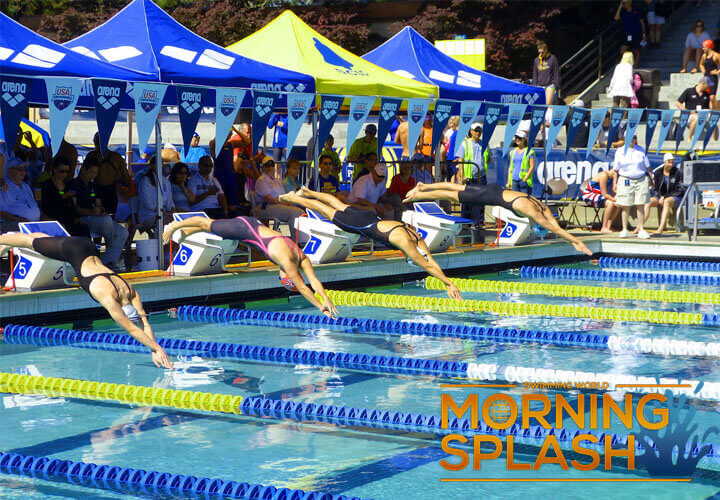
Editorial content for the 2017 Arena Pro Swim Series Santa Clara is sponsored by Arena. Visit ArenaUSA.com for more information on our sponsor. For full Swimming World coverage, check out our event coverage page. CLICK HERE FOR LIVE RESULTS
Morning Splash by David Rieder.
Every year in either late May or early June for the past half-century, the George F. Haines International Swim Center in Santa Clara, Calif., has been a destination for many of the world’s best swimmers. Yes, for 50 years.
Nowadays, many of the specific meets that comprise the Arena Pro Swim Series come and go. The April meet in Mesa has just been around for five years, and the Austin and Indianapolis stops have both shifted from month to month. This year, USA Swimming dropped the typical May stop in Charlotte in favor of new meet in Atlanta. But the Santa Clara meet has always been right around the same time of year.
It far out-dates the Arena Pro Swim Series and its predecessor, the Grand Prix circuit. Natalie Coughlin attended what was then known as the Santa Clara International Invitational when she was 13 years old in 1996—one year before the meet celebrated its 30th anniversary. (For some perspective, the majority of swimmers entered in this year’s meet had not been born in 1996.)
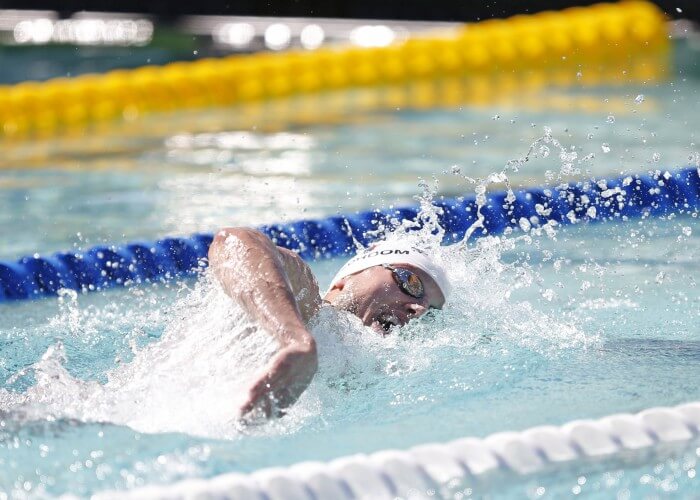
Michael McBroom — Photo Courtesy: Robert Stanton/USA Today Sports Images
Over the years, Santa Clara has attracted plenty of the sport’s vaunted names. In fact, the only meet record not held by an Olympian is the men’s 800 free, in which Michael McBroom swam a time of 7:49.96 one year after capturing silver in the event at the World Championships.
The techsuit era of 2008 and 2009 left its mark on the meet record list, and indeed, the oldest existing marks were set in 2008. At that 2008 edition of the meet, a 15-year-old girl named Elizabeth Beisel, hardly known as a 400 IMer at that point, blasted a 4:36.75 to win the event and set herself up as the No. 2 seed for the event at the upcoming Olympic Trials.
Beisel went on to finish second behind Katie Hoff in the event at Trials—four years after a 15-year-old Hoff had made the Olympic team after a breakout performance at, you guessed it, the Santa Clara meet.
The meet record-setters from that meet whose times still stand: Coughlin, Cate Campbell, Peter Vanderkaay, Erik Vendt and Michael Phelps—each of whom have won medals in at least three Olympic Games.
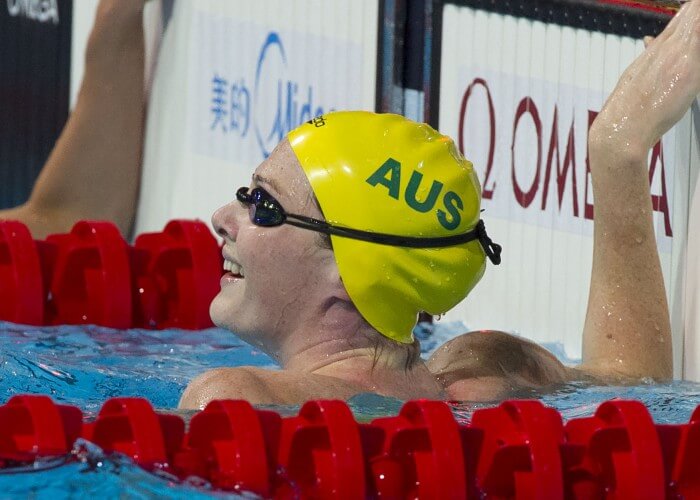
Photo Courtesy: Joao Marc Bosch
Campbell, too, was 15 when she swam in Santa Clara in 2008, having already qualified for her first Australian Olympian team. That year, she broke U.S. Open records in both the 50 and 100 free. The 50 time of 24.13 tied her as the third-fastest performer of all-time in the event, and it still stands as the fastest time ever recorded on American soil.
Months later, Campbell’s first Olympics did not go so smoothly, as she ended up missing the Olympic final in the 100 free, but Campbell did rebound to take the bronze in the 50 free.
Vanderkaay, meanwhile swam times of 1:46.24 in the 200 free (a meet record broken in 2016) and 3:43.82 in the 400 free, at that point his lifetime best in the longer distance. At that point, he had never won an individual medal internationally, but less than three months later, he picked up an Olympic bronze medal in the 200 free and just missed the medals with a fourth-place finish in the 200.
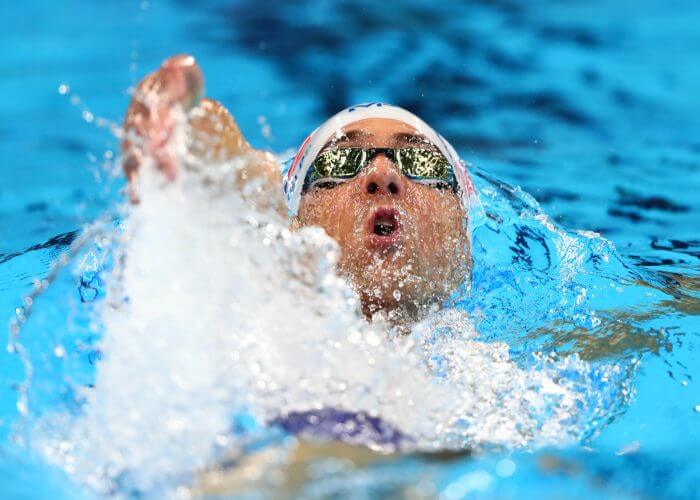
Photo Courtesy: Rob Schumacher-USA TODAY Sports
As for Phelps, the Santa Clara meet provided one of his final preparation meets for his legendary summer of 2008, a stretch which was capped off by his eight-gold-medal performance in Beijing.
That year, Phelps won the 100 fly in Santa Clara in 51.61, a time which remains the meet record entering 2017, and he also set a since-broken meet record in the 100 back, touching in 54.03.
Yes, the 100 back. It’s easy to forget now, almost a decade later, but Phelps almost broke world records in both backstroke events during the summer of 2007 (53.01 in the 100 back, 1:54.65 in the 200 back). At the time of the Santa Clara meet in 2008, it was a legitimate possibility that Phelps might try to add one or both backstroke races to his event lineup for Beijing.
Of course, he didn’t go that route, and the U.S. ended up finishing one-two in both races anyway. And in the years since, Americans have continued to get along just fine without the greatest-of-all-time swimming backstroke. Just last year, Ryan Murphy won gold and took down the world record—two months after he obliterated Phelps’ Santa Clara meet record in the event with a time of 52.76.
So, yes, a few good swimmers have made pit stops in Santa Clara over the years. In 2016, Murphy and Josh Prenot each won events in which they would go on to make the podium in Rio, while eventual 100 free gold medalist Kyle Chalmers actually finished second in his signature event behind fellow Australian James Magnussen.
Also at last year’s meet, Maya DiRado passed on her signature IM events and the 200 back in her final tune-up for Olympic Trials, but her third-place finish in the Santa Clara 200 free ended up proving paramount. Her time of 1:57.70 was a lifetime best, and it ended up earning her a spot on the U.S. 800 free relay in Rio, even after she skipped the event at Olympic Trials.
The start lists for this year’s meet indicate another good one, even if some of those who entered could still decide to not make the trip. Caeleb Dressel is expected to compete against Nathan Adrian in a 100 free for the first time since he swam 40.00 in the 100-yard event at the NCAA championships, and the top three finishers from the epic men’s 200 breast at Olympic Trials, Prenot, Kevin Cordes and Will Licon, are all entered.
On the women’s side, Katie Ledecky will make the short trip south from Palo Alto, and she will swim her first 1500 free since the 2015 World Championships, where she set the current world record with a time of 15:25.48. In total, 25 swimmers who have won Olympic medals are expected to be in town, according to USA Swimming Stats.
We are ready for the #ArenaProSwim at Santa Clara to get started tomorrow. Check out some key numbers for the meet. It’s going to be fun! pic.twitter.com/mwFU8eI6Ec
— USA Swimming Stats (@USASwimStats) June 1, 2017
Of all the big names on the psych sheet, perhaps none stands out more than Beisel. Now 24 years old, Beisel has not raced since the Rio Olympics, but she returns this weekend as one of the oldest swimmers competing in Santa Clara—nine years after that breakout performance in 2008.
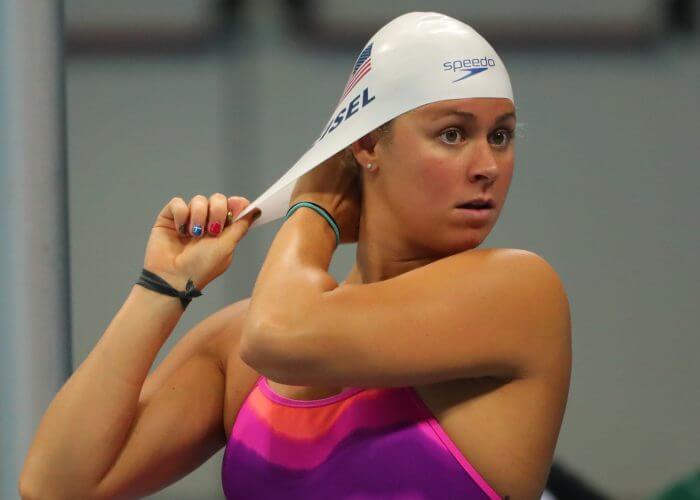
Photo Courtesy: Rob Schumacher-USA TODAY Sports
The usual disclaimer: it’s still an in-season meet, and swimmers are understandably at different points in their training cycles with U.S. Nationals three weeks away and, for the international crowd, the World Championships coming up in seven weeks’ time.
For more than a half-century, world-class swimmers have completed their final tune-ups for the biggest meets of the year in Santa Clara. 2017 will be no different.
All commentaries are the opinion of the author and do not necessarily reflect the views of Swimming World Magazine nor its staff.




.jpg)